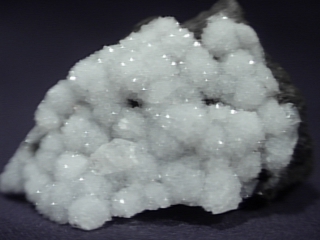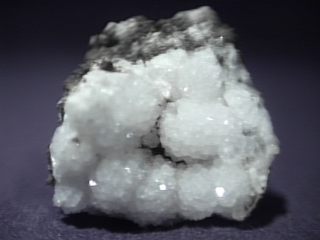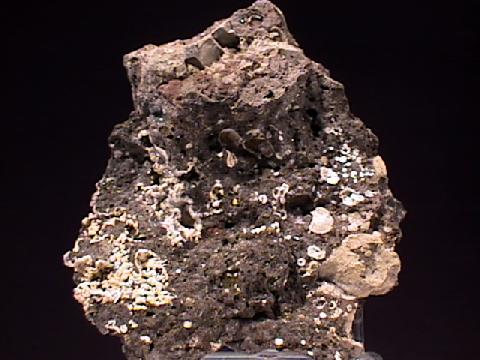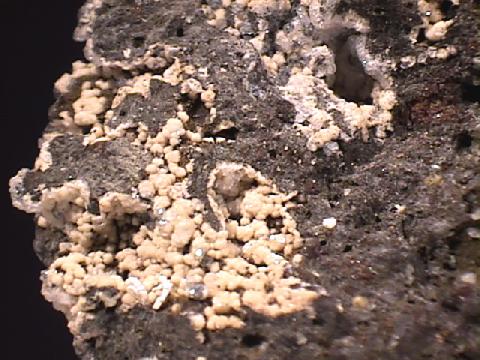
PHILLIPSITE
Specimen phi-1
$ 65.00
Dims: 2.7" x 2.2" x 1.9"(6.9 x 5.6 x 4.8 cm)
Wt: 4.20 oz.(119.0 g)
Dough Boys Mine, Tasmania, Australia
This is one of the more intriguing zeolite specimens that I have seen. It consists of a crust made up of round clusters of Phillipsite crystals that have a maximum diameter of about 0.4"(1.0 cm) and rise about 0.2"(5 mm) up from their base. Some of the clusters on the specimen's edge are broken, so that one can see a strange trait. Even though the clusters show large, shiny terminations on their surfaces, their cross-sections show round, acicular formations that contain countless radiating, needle-like crystals; these crystals have diameters that are much too small to warrant the size of those terminations. There are two very large(8 mm x 3-5 mm x 2 mm) crystals amidst the clusters. These large crystals are colorless and transparent, whereas the clusters are colored white and are translucent, but all have a vitreous luster on their terminations. The radial material inside the clusters, however, has a silky luster, likely due to the density of the crystals' arrangement. All of the mineral rests on a bed of basalt. This is the first specimen I have seen of this mineral; I believe that it isn't a very common zeolite.







